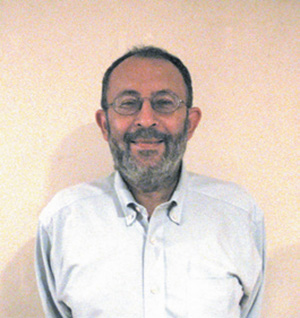
As part of the Sukkot hoshanot we recite the request “Ani Ve-Ho Hoshiah Nah.” This phrase originates in a statement by R. Judah at Mishnah Sukkah 4:5. But what is the meaning of the word Ve-Ho (vav, hei, vav) and the entire cryptic phrase?
Rashi (Sukkah 45a) suggests that Ani and Ve-Ho (vav, hei, vav) are the two of the 72 three-letter Divine names that can be derived from three verses at Exodus 14:19-21.
But if we look at the standard printed text of the Mishnah in the Jerusalem Talmud, the second word in R. Judah’s statement has four letters: Ve-Hu (vav, hei, vav, aleph). This is the reading in the earliest manuscripts of the Mishnah. It is also the reading in R. Ahai Gaon, in R. Hai Gaon, and in R. Hananel. In fact, it is the reading in all sources prior to Rashi.
Almost certainly the four letters vav, hei, vav, aleph were the original reading in the Mishnah. Probably, the alternative three-letter reading vav, hei, vav arose as an abbreviated form of vav, hei, vav, aleph.
As stated earlier, our first evidence for the reading vav, hei, vav is Rashi. This reading likely spread due to his influence and due to the interesting interpretation he provided. Also, ve-ho sounds like the subsequent phrase ho-shiah, making the erroneous reading sound like it has some validity. There is indeed a rabbinic tradition that pre-dated Rashi that the verses at Exodus 14:19-21 serve as a source for 72 three-letter Divine names. But once we realize that our Mishnah text originally had four letters, vav, hei, vav, aleph, then this tradition has nothing to do with our Mishnah.
So we must now reformulate our original question and ask what is the meaning of R. Judah’s statement Ani Ve-Hu Hoshiah Nah (=I and He, Please Save Us)?
Regarding the word Hu (hei, vav, aleph), it has been suggested that it is used as a Divine name, or at least hints to a Divine name, in many Biblical passages. See, e.g, Isaiah 7:14, Exodus 34:14, Isaiah 42:8, Isaiah 43:25, and Jeremiah 10:10. Also, at least two passages in Amoraic literature interpret it as an allusion to a Divine name in specific Biblical passages. See Niddah 31a and Pesikta de-Rav Kahana, sec. 13. Thus, a strong argument can be made that hei, vav, aleph is a reference to a Divine name in the statement by R. Judah in our mishnah.
Regarding the word Ani, one can argue that it alludes to a Divine name in certain verses in the Bible. See, for example, the many Biblical verses that include the phrase Ani Hashem, such as Ex. 12:12 and Is. 42:8. It almost certainly refers to God and alludes to a Divine name in a statement attributed to Hillel at Sukkah 53a: im ani kan, ha-kol kan (=if I am here, everyone is here). In light of this, Hillel’s famous statement: im ein ani li, mi li (first chapter of Avot) also perhaps should be interpreted as one that alludes to ani as a Divine name.
Based on all of the above, most likely ani and hu were meant as Divine names in our mishnah in Sukkah, and R. Judah was merely advocating for an aravah ritual that included the recitation of these names.
The realization that hu sometimes served as a Divine name in early rabbinic literature has implications for our prayers. Consider the line in the Kedushah for Mussaf of Shabbat: hu elokeinu, hu avinu, hu malkeinu, hu moshienu, ve-hu yashmieinu… Also, the piyyut Adir Hu, with its repeated use of hu. Most likely, hu serves as an allusion to the Divine name in these prayers. (There are many other such examples.)
Finally, most interesting is a close examination of the daily prayer Yehi Chevod. This prayer is composed of 18 sentences, 16 of which include the four-letter Divine name. The two sentences that do not are: ki hu amar… (Psalms 33:9) and ve-hu rachum … (Psalms 78:38). Is it a coincidence that both of these include the word hu, prominently placed? Almost certainly, the author of this collection viewed hu as a Divine name.
(I have addressed this entire topic in a detailed study in my book “Esther Unmasked: Solving Eleven Mysteries of the Jewish Holidays and Liturgy” (2015).The above was just a brief summary.)
Mitchell First can be reached at [email protected]. Someone he knows grew up with the tradition that ve-hu was the correct reading, but was serving as the chazan in an Ashkenazic shul in Teaneck where the congregants were expecting “ve-ho.” What did he do? He skillfully recited the word in an ambiguous manner so it could be understood either way!
For more articles by Mitchell First, and information on his books, please visit his website at rootsandrituals.org.










